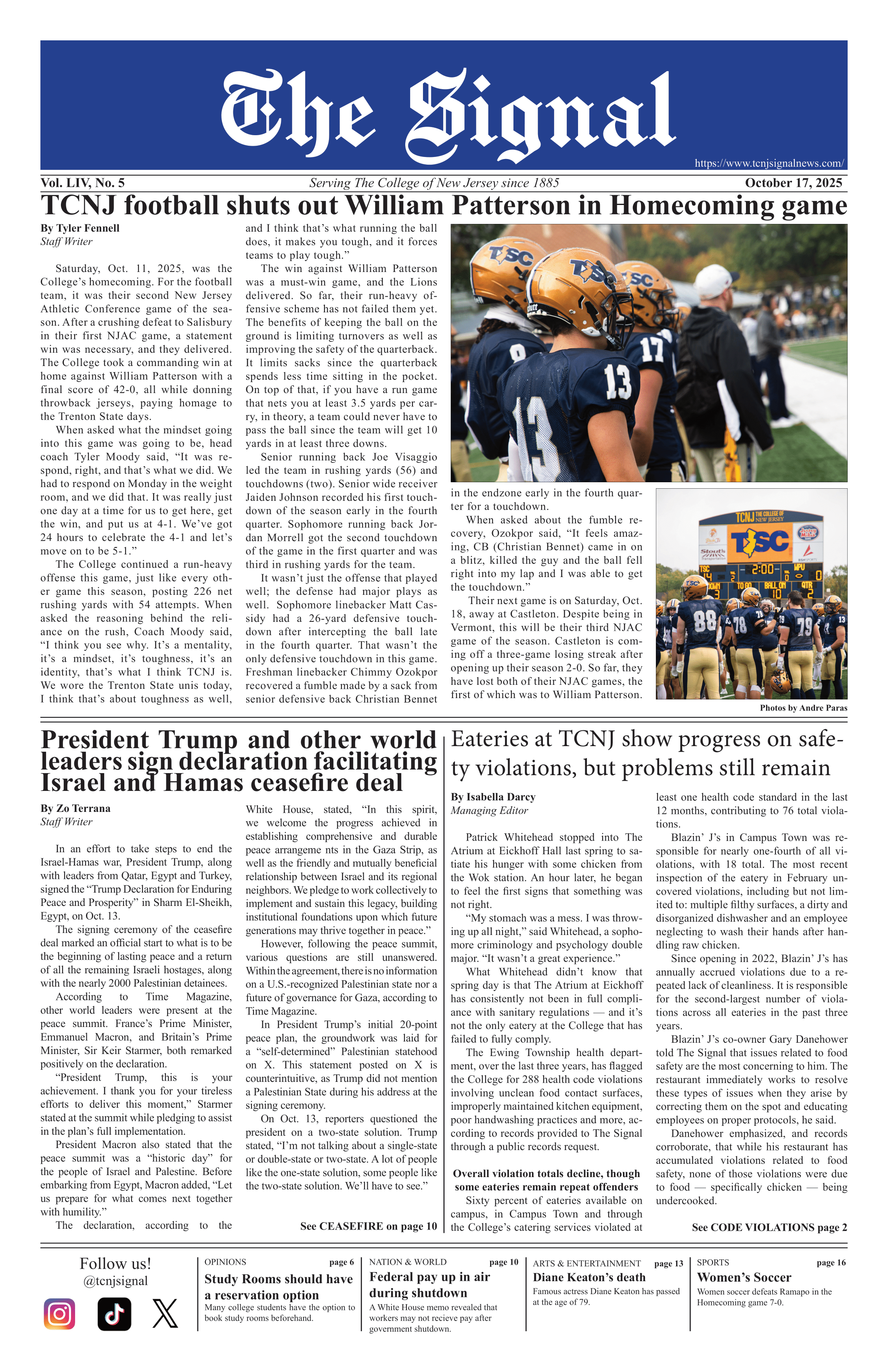By Jesse Stiller
Correspondent
The College’s Wi-Fi network will complete its long-awaited makeover this semester with hopes of a more reliable and optimized experience for students and guests.
The new user-friendly service, known as “Eduroam,” will replace the current TCNJ-DOT1X system in late February. Just before winter break, the College’s Department of Information Technology sent an email to the campus community notifying them of the nearly completed project and its planned implementation.
“The infrastructure has been evolving for two years, so it’s been a really big project,” said Chief Information Officer and Vice President for Information Technology Sharon Blanton.
The plan was greenlit and fully funded for some time, but had trouble getting off the ground for implementation until recently.
The new plan will add wireless access points and upgrade existing points on campus, increasing reliability of connecting to the Wi-Fi regardless of a user’s location on campus. Blanton said that the new network also aims to optimize the current outdated system for a faster and more reliable one, and increase bandwidth around campus so that students and faculty do not have to worry about shoddy connection while in class or studying.
“We will have increased our capacity by almost threefold. In the last couple of years, we went from 1,200 wireless access points up to about 3,300, so it’s a really significant increase,” Blanton said.
The new network will allow students to roam around campus without fear of having their internet connection interrupted. Under the old system, students would regularly lose their Wi-Fi connections almost immediately after entering or exiting certain buildings on campus. This new system puts a “blanket” on top of the College, or a thick layer of strong Wi-Fi connection covering the entire campus, allowing the Wi-Fi to “roam” with its users so they aren’t disconnected at inconvenient times, according to Blanton.
Blanton was optimistic about the benefits of implementing this new service, especially when students bring more than two internet-connected devices to campus.
“One benefit is ease of use,” Blanton said. “It has a lot more capacity to handle more devices.”
In addition to increased network speed, the new Wi-Fi system will also fix the “timing out” issue that students have when logged on to the College’s network, which would randomly disconnect students from the network for anywhere from 10 seconds to five minutes.
While there are some hesitations about the new Wi-Fi system, students are optimistic that the changes will improve their academic success and ability to complete assignments efficiently.
“I’ve lost my Wi-Fi plenty of times while walking around campus,” said Kaitlyn McSweeney, a senior English and secondary education dual major. “I don’t know if it was a dire need, but it’s helpful to the College.”
Kirk Amiaga, a freshman political science major, acknowledged the new system’s ability to streamline students’ to-do lists.
“I would say it’s an important change to the campus,” Amiaga said. “It would allow me to save time on my assignments.”
Despite the perks, Blanton warned that the new system may need to be changed frequently due to the increasing demands of technology and its use of bandwidth.







